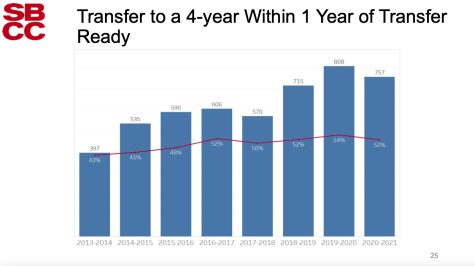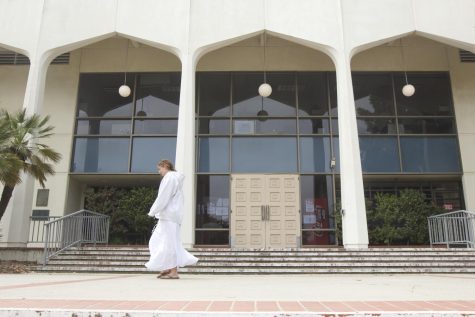The spring season marks the awakening of vegetation, animals, and college administration offices. During this time, students begin to examine the changes in the environment, as well as their continuing educational paths. At City College, most students prepare for the next phase in their learning: transferring to a four-year institution.
A transfer-ready student is someone who has completed transfer-level math and English requirements, obtained 60 transferable units, and has a GPA of 2.0 or higher, said Z Reisz, senior director of the Institutional Assessment, Research and Planning (IARP) office at City College.
According to City College’s latest Institutional Effectiveness Report, 52% of students within one year of being transfer-ready successfully transferred to a university in the 2020-2021 academic year.
City College prepares students with a transfer-oriented goal for a successful transition into a university, with resources such as Academic Counseling and the University Transfer Center for guidance.
“Very roughly we see about 50 to 60% of our students, in a given term, having a transfer goal,” Reisz said.

According to Reisz, the IARP tracks transfer success within one year following a student becoming transfer ready or having completed a degree. The results allow the IARP to illustrate the transfer success trends through each academic year.
Within these trends, the IARP further reveals the varying degrees of student experience among different ethnic groups at City College.
An ethnic group that has experienced disproportionate impacts in more areas of student success and the transfer process is Black students.
“It seems like if we get [students] to that point, they’re definitely transferring,” said Reisz in regards to disproportionately impacted Black students at City College. “That’s not where the concern is, it’s in all of those metrics leading up to it.”
In order to tackle these underlying issues revolving around student and transfer success, City College follows a three-year equity plan designed by the Student Equity Committee to lift boundaries for students facing constant disproportionate impacts.
The committee focuses on four main objectives when working through each equity plan: friction points, current structure evaluation, ideal structure evaluation, and necessary transformation to reach the ideal structure.
Common issues addressed in the equity plan for Black City College students within transfer success included lack of student-focused class schedules, lack of Black representation among faculty and staff, and lack of coordination between academic counseling and the transfer center to increase transfer support.
Although Black students are only one of many disproportionately impacted ethnic groups, according to Reisz, City College does not attain the “bandwidth to focus on all the equity gaps.”

“We had to make some careful decisions about where to focus our efforts, and to do that we kind of based that on what was the magnitude of the gap, what was the persistence of the gap across time, and how many students were impacted,” Reisz said.
These components help City College determine an equity plan’s focus on a certain group, providing feasible support.
“It gets the college more practice and the system at large more practice at actually working through this in a more meaningful manner that is more likely to have a positive impact on the students,” Reisz said.









